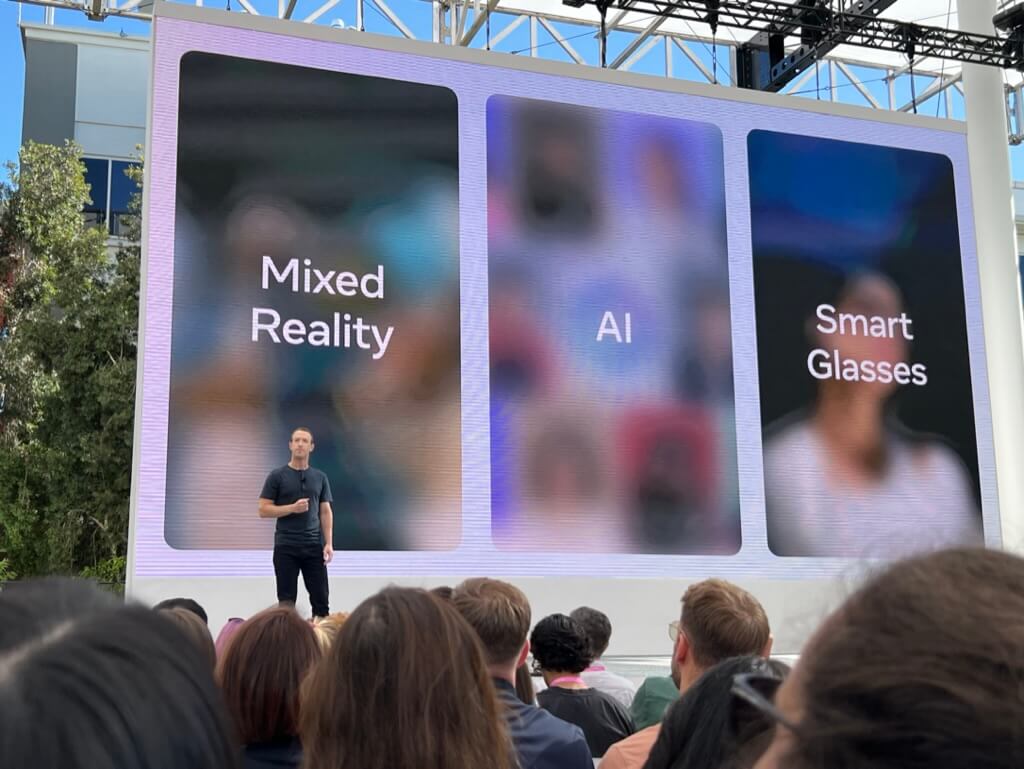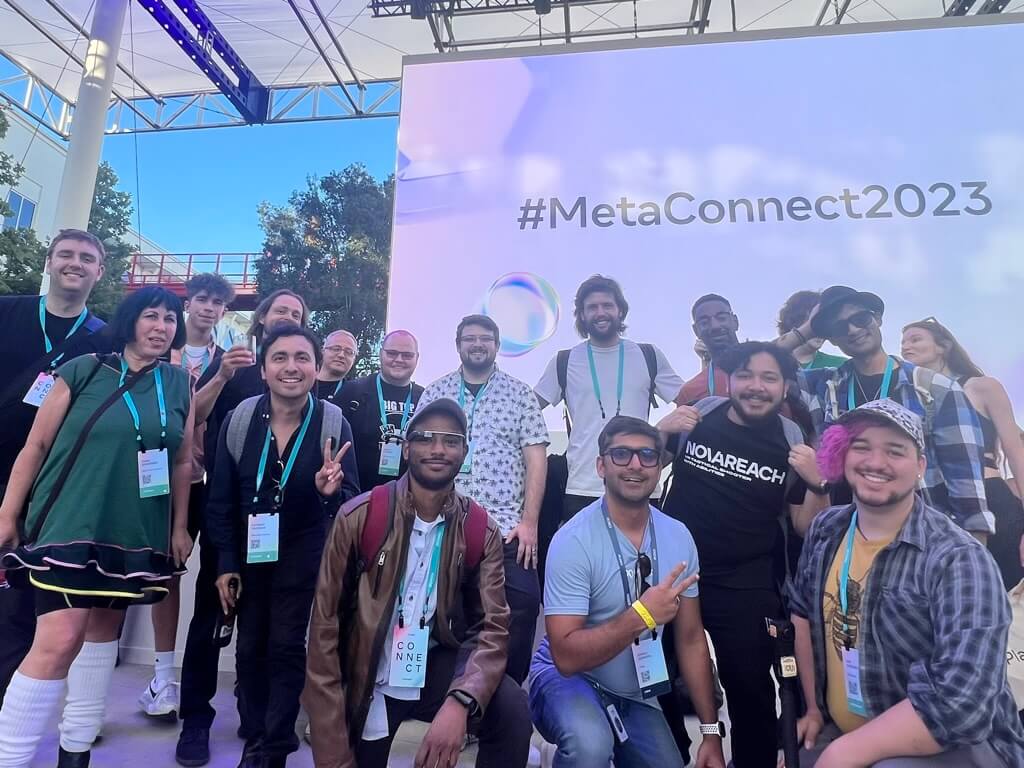Treeview at Meta Connect 2023

Treeview was invited to attend Meta Connect 2023, the first in-person Connect since 2019 hosted at Meta Headquarters in Menlo Park, California.
The 2-day event was packed with presentations, talks, workshops, tech demos, and Mark’s Keynote. Everyone has been talking about the announcements of new products, but few have really been analyzing the impact of Meta laying out its company strategy for consumer products, for enterprise and for the AR/VR development community.
Let’s jump into what we know:
Meta for Consumers
Throughout the event, there was a cohesive and centralized vision of Meta which was present and repeated throughout all talks. This was laid out by Mark in the Keynote which are 3 primary pillars.

1. Mixed Reality
Meta’s main focus as a company is to become the leader of the next computer interface after smartphones, which both Meta and Apple are in an arms race to achieve. Both companies are taking different strategy approaches to introduce spatial computing to the market.

Meta repeatedly stated throughout the conference that they are all about creating technology for everyone. The Quest 3 is a direct competitor of the Apple Vision Pro launching early 2024 but is targeted for the mass market at $499, while the Vision Pro will start at x7 the price: $3499 making the device targeting a much smaller user base.
Meta’s strategy here is quite brilliant. Apple will be launching the most advanced spatial computing headset ever created that everyone wants but few can afford. Meta will be catering to that mass market user base through a headset with the largest content library and all core features and functionalities that the Vision Pro has.
Meta has previously been focusing primarily on virtual reality which is an amazing technology but more of a niche. The launch of the Quest 3 alongside the Vision Pro early next year will officially start the first generation of mass market spatial computing generation which Meta is well positioned to dominate in device sales, user base, content sales, and the collection of user data that will be instrumental for development of generation 2 probably scheduled for 2025/2026.
2. AI
AI has been hot in tech this year seeing huge breakthroughs led by OpenAI (Microsoft) ChatGPT and genAI image creation tools like Midjourney.
Meta is now up to speed with the launch of Meta AI, a direct competitor of ChatGPT, and EMU a super realistic AI generator similar to Midjourney.

Meta is launching both services for free, but what gives Meta a massive competitive advantage here is the fact that Meta’s software applications: WhatsApp, Messenger, Facebook and Instagram have over 3B monthly active users they will rollout this technology to via seamless integration for how their user base is already using their products.
Meta can not only leverage its existing user channels to distribute this technology at scale but also has the largest user-generated content repositories of the world which give it so much raw data to build AI models from.
3. Smart Glasses

The third strategy pillar is smart glasses. Meta and Essilor-Luxottica are continuing their partnership to launch the second generation of Ray-Ban Meta Smartglasses. Apart from category improvements in all existing first-gen features like high-quality camera capture, form factor and integrated speakers, Meta is rolling out Meta AI directly integrated into the device with the magic of AI contextual awareness through the camera feed. A user can ask what they are seeing and Meta AI will peek into the camera feed, interpret the image, and reply to the user with ChatGPT 4 level of intelligence.
The long-term vision of Meta for smart glasses is to integrate mixed reality capabilities into an everyday eyewear form factor which is a monumental technological, hardware, and physics challenge. The Ray-Ban Meta Smartglasses are a strong step forward in the transition of humanity from smartphones to immersive technologies.
Meta for Enterprise
Most of the public online announcements were for the consumer market but Meta has a strong vertical for enterprise which was presented at many of the Meta for Work talks and workshops. The main announcement was for Meta for Business, a software suite designed to manage and distribute XR content through enterprise organizations.
Meta also shared insights around the primary use-cases that are thriving in enterprise as well as talks from industry deployments from companies like Pfizer on how they are deploying XR for different business use cases.
Meta’s strategy for enterprise use cases is focused on:
- Learning, training and education.
- Creativity, design and visualization.
- Meetings, collaboration and utility tools.
- Team building and community engagement.
Meta is continuing to work with developers and enterprises to explore and deploy new solutions and applications powered by this next generation of mixed reality devices.
Meta for the Developer Community
At Meta Connect, we saw firsthand Meta’s commitment to fostering a robust developer community. Meta understands and communicated that it takes a village to bring spatial computing to the world and is committed to making this happen.
This commitment was evident in the transparency with which the different units of Reality Labs shared their ongoing projects. Developers had the opportunity to engage directly with the team, discussing their current progress, advancements, and openness to receiving feedback, suggestions, and ideas. Many of these projects and initiatives are open-sourced and available for developers to explore and integrate into their projects.
Meta has always prioritized developer relationships, and this year at Connect, we got to witness this dedication at it’s peak.








Wrapping Up
Meta Connect 2023 was more than just a showcase of products; it was a deep dive into the company's vision and strategy. For attendees, the event offered a whirlwind of insights, ideas, and inspirations to shape the future of technology.
The next 12-24 months will be wild. Hold onto your headset.
Until next time.
<o> Horacio


